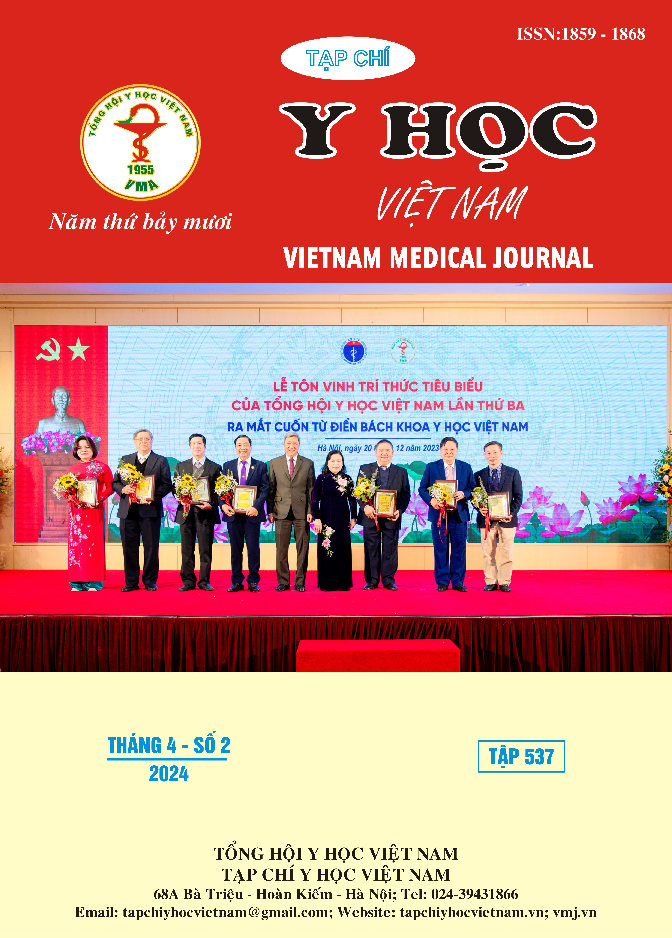EVALUATION OF ENDOTRACHEAL TUBE CUFF PRESSURE IN PATIENTS UNDERGOING ENDOTRACHEAL ANESTHESIA
Main Article Content
Abstract
Background: In clinical practice, endotracheal tube cuff pressure during endotracheal anesthesia is often not measured. Cuff pressure is often based on palpation and experience of the person pumping the cuff. Cuff pressure above 30 cmH2O can damage the tracheal mucosa and cause many complications for intubated patients. However, this factor can be avoided with the attention and management of anesthesiologists. Ojectives: To evaluate the rate and predictors of cuff pressure exceeding the safe threshold in patients undergoing endotracheal anesthesia. Methods: A prospective, cross-sectional study was performed on 122 patients undergoing endotracheal anesthesia for elective surgery. Immediately after the patients were intubated, the cuff pressure was measured, recorded and adjusted if it was outside the safe range. Parameters of cuff pressure, volume of gas pumped into the cuff, and endotracheal tube size were recorded and analyzed. Results: Mean cuff pressure with palpation technique was 32±10.6 cmH2O. The rate of cuff pressure exceeding 30 cmH2O is 41.8%. There were 12 cases of cuff pressure greater than 50 cmH2O. Independent factors predicting cuff pressure exceeding the safe threshold include short height (OR = 0.68, 95% CI: 0.5 - 0.9, p = 0.009), volume of air pumped into the cuff (OR = 31.53, 95% CI: 5.39 – 184.54, p=0.001). Conclusion: Cuff pressure cannot reach a value within the safe threshold by palpation technique so endotracheal tube cuff pressure should routinely be measured using a manometer. It is necessary to choose the appropriate endotracheal tube size for each patient.
Article Details
Keywords
Endotracheal tube, cuff presure, anesthesia, intubation.
References
2. Amirhossein Orandi (2021). “Evaluation of Endotracheal Tube Cuff Pressure in Intubated Patients in Emergency Department, Operating Rooms, and Icus of Imam Khomeini Hospital Complex in 2018; A Cross Sectional Study”. Achives of Anesthisiology and Critical care 2021; 7 (2): 69-74.
3. Fernandez R, Blanch L, Mancebo J, Bonsoms N, Artigas A (1990) “Endotracheal tube cuff pressure assessment: pitfalls of finger estimation and need for objective measurement“. Crit Care Med 1990, 18:1423-1426
4. Seegobin R, van Hasselt GL (1984) “Endotracheal cuff pressure and tracheal mucosal blood flow: endoscopic study of effects of four large volume cuffs”. BMJ. 1984;288:965-968.
5. Sengupta P, Sessler DI, Maglinger P, et al (2004). "Endotracheal tube cuff pressure in three hospitals, and the volume required to produce an appropriate cuff pressure". BMC Anesthesiology, 4(1): pp. 8.


